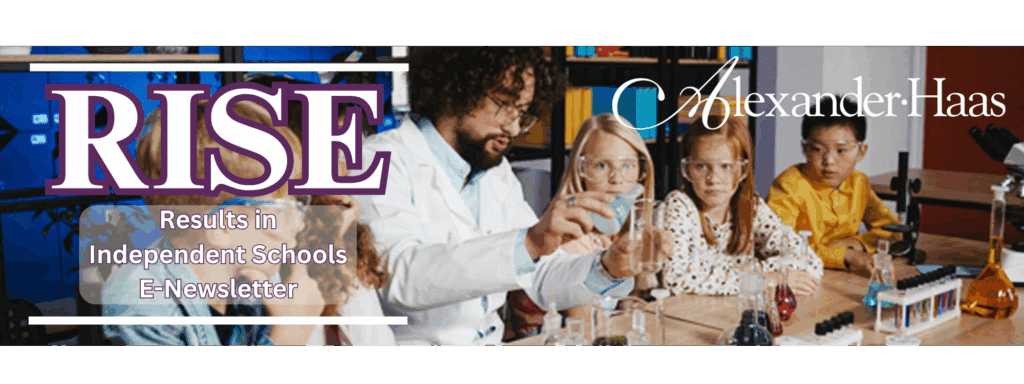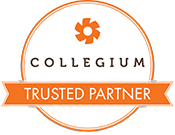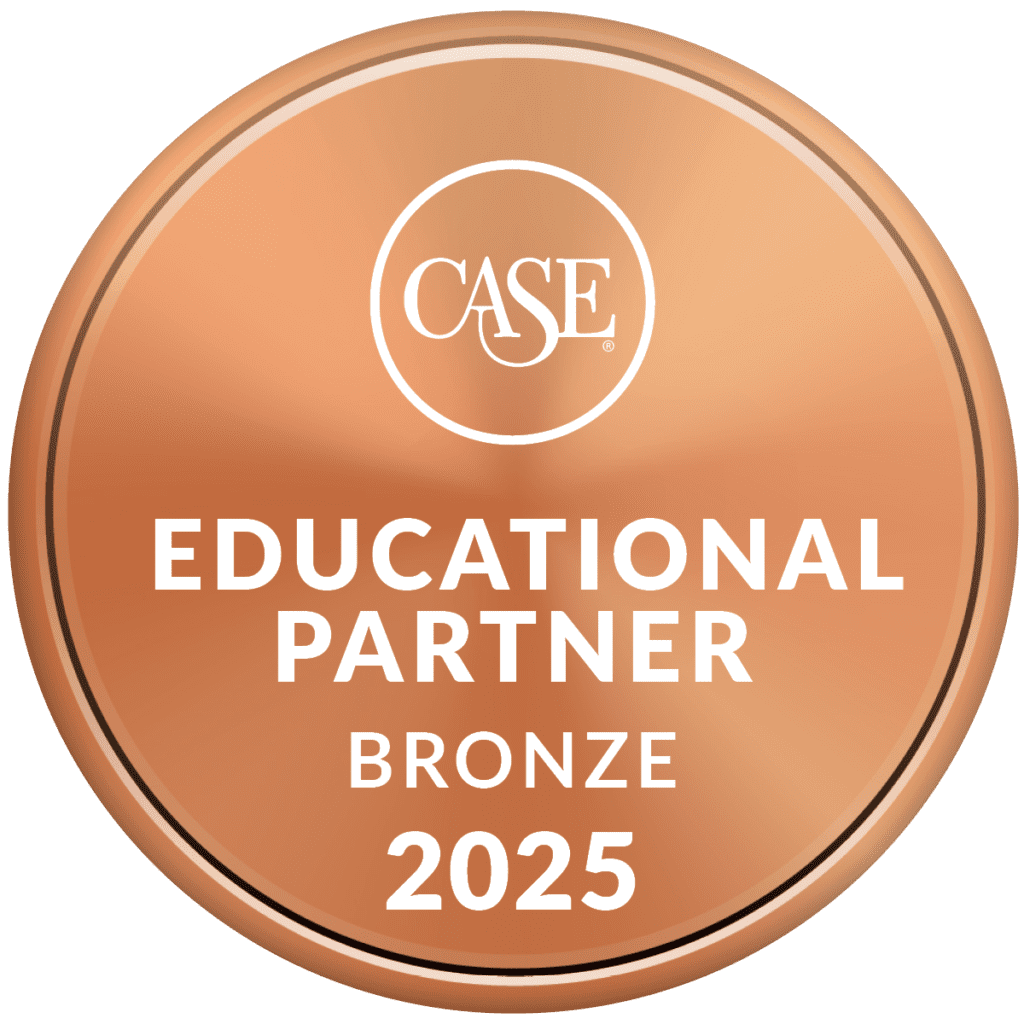
 From the Desk of
From the Desk of
Sherrie Dodson | Associate Partner – Analytics and Advancement Services
In today’s rapidly evolving advancement landscape, instinct alone is no longer sufficient. While relationships remain at the heart of fundraising, data is swiftly becoming the bridge between insight and action. We believe that the most successful advancement strategies do not merely react to the past — they proactively anticipate the future.
That’s where predictive modeling comes in. It uses the information you already have about your donors—their behaviors, histories, and engagement patterns—to help you make smarter decisions for the future.
It’s more than just a list of names. Predictive modeling provides clarity by showing you which prospects are most likely to respond, when to reach out, and how to align your strategy with their capacity and connection to your mission.
This type of data leads to sharper campaigns, more efficient outreach, and stronger portfolios. With goals grounded in data, fundraisers can focus their time where it matters — and leaders gain real insight into the road ahead.
Of course, none of this works without a solid foundation. Strong advancement services—from clean data to streamlined gift processing and reliable reporting—are what make analytics meaningful. Our role is to come alongside your organization, assess those back-end systems, and ensure everything is aligned and functioning in sync.
Predictive analytics isn’t about replacing intuition or relationships — it’s about empowering them. It’s about giving your team the tools to work smarter, plan better, and make the kind of impact your mission deserves.
The future is now—Alexander Haas is proud to offer a comprehensive suite of predictive modeling, donor analysis, and advancement services solutions designed to enhance the efficiency and effectiveness of your development program.
Alexander Haas Analytics & Advancement Services
Some highlights of our strategic approach to prospect identification and management:
Fundraising Capacity Analysis
Our Capacity Analysis service gives your organization a solid foundation for successful fundraising. Collaborating closely with your leadership team, we will perform an in-depth capacity analysis at both the institutional and departmental levels to set realistic yet ambitious fundraising goals. This analysis considers historical giving patterns, current donor engagement, and external market factors to establish achievable targets.
Predictive Modeling and Donor Segmentation
- Major Gift Model: Identify donors with the highest capacity and propensity to make significant contributions to your organization, allowing for focused cultivation strategies.
- Planned/Deferred Gift Model: Pinpoint prospects likely to consider legacy giving, helping you build long-term sustainability through your planned giving program.
- Annual Fund Model: Optimize your annual giving program by identifying donors with consistent giving patterns and those ready to increase their support.
- Organization-Specific Model: Receive custom predictive models tailored to your unique institutional characteristics and fundraising priorities.
Prospect Pool and Portfolio Optimization
- Comprehensive Pool Analysis: Transform your database into a strategic asset by identifying, qualifying, and prioritizing prospects based on giving potential and engagement readiness.
- Portfolio Balancing: Optimize workloads by determining ideal portfolio sizes and compositions, ensuring fundraisers manage the right mix of prospects across various stages of cultivation.
- Strategic Prospect Assignment: Match prospects to fundraisers based on expertise, relationship history, and prospect characteristics to enhance engagement effectiveness.
Independent Schools & Philanthropic Funds Data
We’ve got new data in from some Independent School National Associations. Let’s look closer at the Council for Advancement and Support of Education participating schools rand what they raised in philanthropic funds for data entry year 2024-2025.
School Count 524
| Advancement Median Funds Received for ’24 | $3,442,012 |
| Median Number of Donors | 871 |
Median Percent Participation by Constituency & Hard Credit Funds Received | |
| Median % Participation by Parents/Guardians of Current Students | 65.4% $767,448 |
| Median % Participation by Alumni/ae | 8.8% $302,455 |
| Median % Participation by Grandparents of Current Students | 14.2% $61,818 |
| Median % Participation by Parents & Grandparents of Alumni/ae | 7.4% $373,250 |
| Median % Participation by Employees | 64.0% $31,089 |
Trustees | |
| Median Number of Trustees | 21 |
| Median Hard Credit Funds Received by Trustees | $206,145 |
| Median Soft Credit Funds Received by Trustees | $181,075 |
Funds Received by Purpose (’24) | |
| Median Funds Received for Current Operations: Unrestricted | $1,194,983 |
| Median Funds Received for Current Operations: Restricted | $374,219 |
| Median Funds Received for Endowment | $341,518 |
| Median Funds Received for Other Capital Purposes | $1,198,100 |
| Median Funds Received for Irrevocable Deferred Gifts at Face Value | $255,169 |
COP’s Technology Survey: Top 5 Key Findings
This spring, The Chronicle of Philanthropy commissioned a survey to ask nonprofit leaders about their approaches to technology, the challenges they encounter in implementing it, and the potential they believe it holds.
Here are five key takeaways:
Nonprofits spend a fraction of what businesses do on tech.
Almost 90% of nonprofit leaders believe that technology is essential for their fundraising success; however, most allocate less than 3% of their budgets to it. In contrast, for-profit companies invested nearly 6% of their budgets in technology last year.

The tech gap is creating winners and losers.
Those who spend over 3% of their budgets on technology are twice as likely to report using it in advanced ways. The most digitally savvy groups can attract more funding for, say, a flashy new AI-driven tool, while their less technologically sophisticated peers fall further behind.
Leaders know what’s wrong — they just can’t afford to fix it.
Nearly 90% of nonprofit leaders identified budget constraints as their main obstacle to improving their tech strategy. At the same time, 64% point to a lack of in-house expertise, and 62% say they lack the time to properly vet and implement new tools.
Small changes can make big differences.
A single tech-savvy staff member or board volunteer can drive significant changes for smaller organizations by serving as an advocate and early adopter of new software and workflows. COP, 6-4
More of the survey can be found here.
We Know Independent Schools
For more than 35 years, Alexander Haas has been a fixture in the nonprofit community. We are honored to have worked with so many remarkable independent schools, both secular and non-secular, across the country that help mold today’s adolescents into tomorrow’s leaders. Take a look at our list of independent school clients, past and present.
A Fresh Approach to Fundraising
Our services aren’t cookie cutter. We don’t operate with a boilerplate, merely changing names and locations. We craft each and every service we provide to match your organization’s unique needs, wants and abilities. We work hard and expect you to do the same. Together we can help you transform your institution, your fundraising, and the community you serve.
Whether your need is in Capital Campaign, Annual Fund Campaign, Major Gifts, Leadership Annual Giving, Planned Giving or all of the above, we take a fresh approach to nonprofit fundraising.


